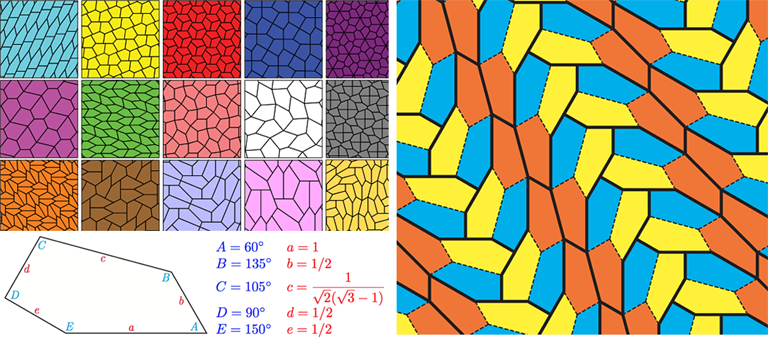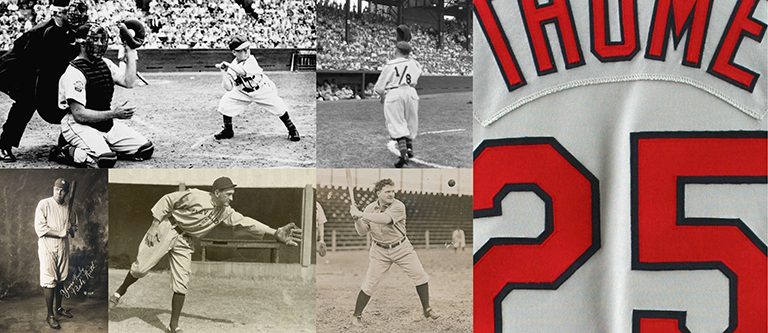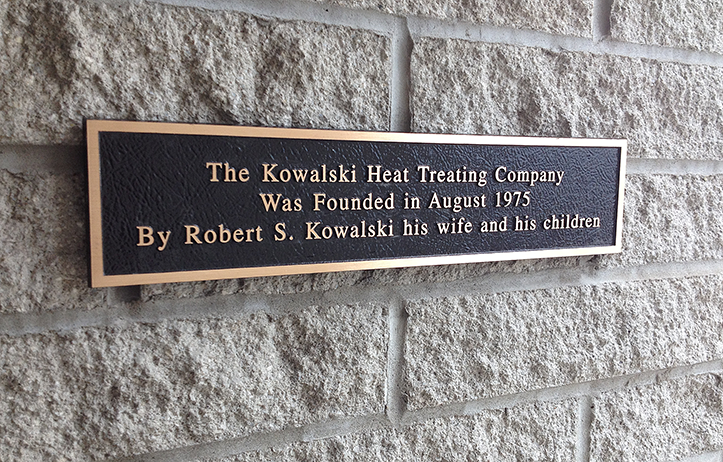Chipping Away at the Problem.

Top left: The 15 types of pentagonal tilings discovered. Art: Ed Pegg/Wikipedia Bottom left: The math.
Right: The 15th convex pentagon found to be able to tile a plane. Art: Casey Mann
At Kowalski Heat Treating, we’re all about doing great work, constantly searching for new and better ways to help our clients grow their businesses – often rooted in problem solving your PIA (pain in the @#$) Jobs. And we marvel at new thinking and new discovery.
This week’s blog and email post salutes the work of three mathematicians in their discovery of the latest convex pentagrams to tile a plane, courtesy of a post by npr.com.
Jennifer McLoud-Mann, along with her husband Casey and David Von Derau have spent the past few years trying to help unravel one of math’s long-standing unanswered questions. How many shapes are able to “tile the plane”? — meaning shapes that fit together perfectly to cover any flat surface without overlapping or leaving any gaps. For example, mathematicians have proved that all triangles and quadrilaterals (shapes with four sides), can tile the plane, and have documented all of the convex hexagons that can do it. But what about five sided pentagrams.
When dealing with pentagons — specifically convex, or nonregular pentagons with the angles pointing outward – the number of convex pentagons is infinite — and so is the number that could potentially tile a plane. It’s a problem that’s almost unsolvable, but also so simple, as anyone could start working toward a solution using just pencil and paper.
Last month, a cluster of computers spit out some intriguing possibilities. Sifting through the data, McLoud-Mann thought she found either impossible pentagrams (one’s that did not fit the problem), or ones that already fit into the 14 types that had been found.
But, this time it was different – the team came up with the first new convex pentagon able to tile the plane in some 30 years, joining only five mathematicians who have accomplished this feat. McLoud-Mann is considering what to do with the pattern – either tile a spot in her home or build a display of the pattern at her University of Washington site. To read the full original story, go HERE.
You know, I’m inspired to re-tile my bathroom with the new pentagon this weekend. I’ll let you know how it turns out.




